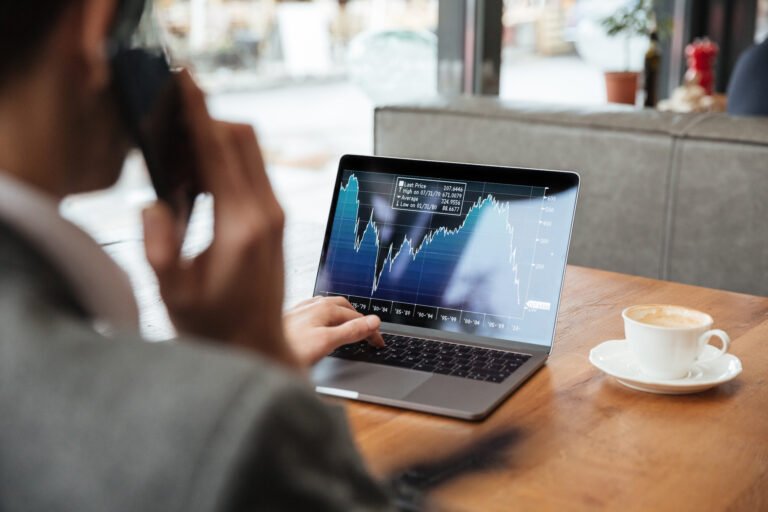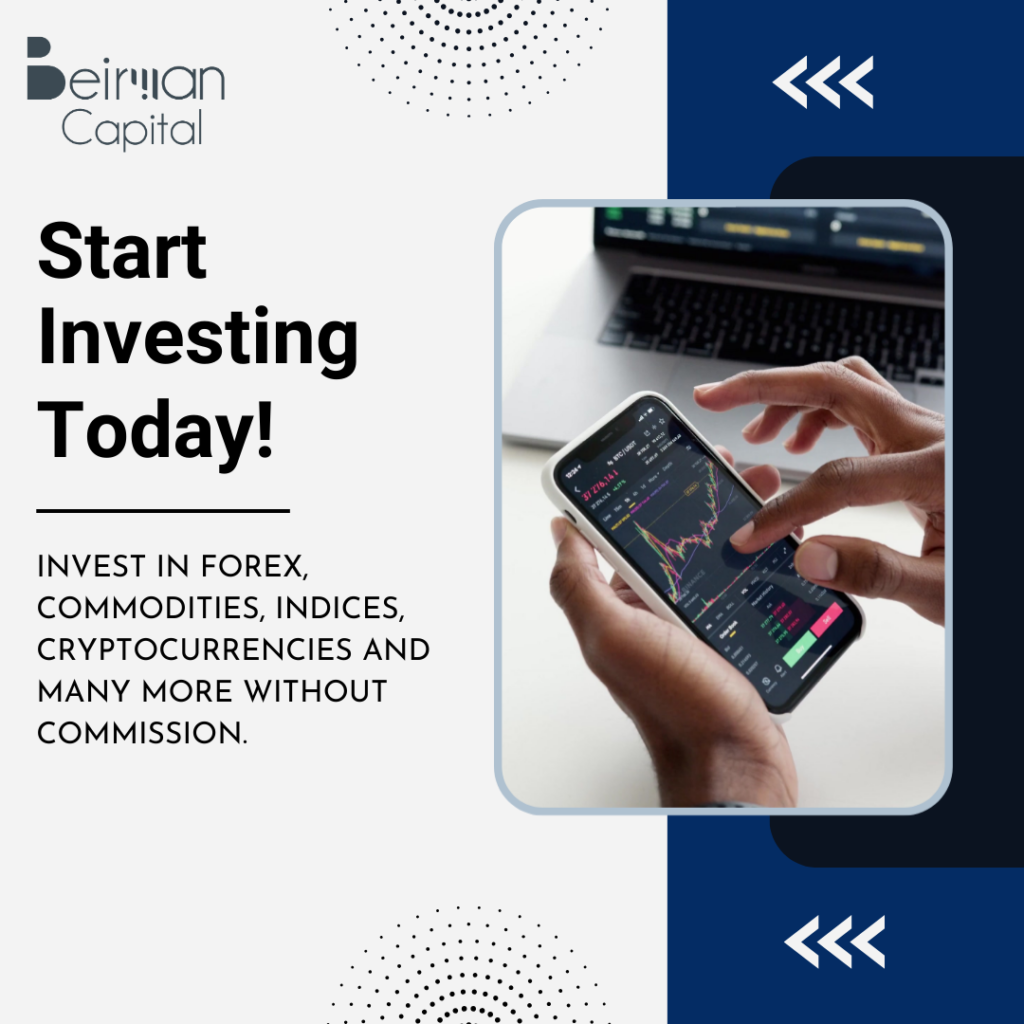What is ETF Trading
An Exchange Traded fund is a measure to track the performance of a large group of assets. Discover the procedure of ETF trading with its key benefits.
Table of Contents
Trading in currencies, commodities, indices, or any other financial instrument can be done in numerous ways. Exchange Traded funds or ETFs are one of the popular ways to trade in these financial instruments. So, if you want to start trading ETFs, then this article is for you. We will discuss ETF trading with examples and step-by-step procedures to trade in it.
What is an ETF?
ETF or Exchange Traded fund is the measure to track the performance of a large group of assets, including stocks, commodities, bonds, indices, and many more.
The SPDR S&P 500 ETF is amongst the first, and most popular exchange-traded funds which trades on the NYSE Arca under the symbol SPY.
SPDR is an acronym for the Standard & Poor’s Depositary Receipts, the former name of the ETF. It is designed to track the S&P 500 stock market index.
The iShares Russell 2000, Blackrock, IVV, MSCI, Invesco, VEA, SPY, etc are some other popular ETF Funds, globally.
What is ETF Trading?
ETF trading is the process of buying and selling ETFs with the aim of making a profit from their price movement. Under this process, you can buy or sell a large number of securities with a single trade.
Trading in ETFs is based on price speculation. The price of the exchange-traded fund changes over time. Traders speculate the rise and fall of their prices and make buying and selling decisions based on their analysis.
How to trade ETFs
Trading ETFs can be a complex process for news trades. But not to worry, here is a step-by-step procedure to start your ETF trading expedition.
Market Research
The first and foremost step to start trading in ETFs is to get well-versed with how the market functions and the factors that affect your journey.
ETF trading has many distinct features and benefits. There are numerous courses, webinars, video tutorials, and educational resources available for free on different platforms. You can use such resources for a better understanding of ETFs.
Determine the type of ETF
Whether you are a forex trader, commodity trader or stock trader, ETF trading can be suitable for you as there are different types of ETFs, including commodity ETF, currency ETF, bond ETF, stock ETF, and many more.
Selecting an ideal ETF is a crucial factor. A trader has to analyze factors like charges or commission, performance, volume, liquidity, etc, before determining an ETF to trade.
Develop a strategy
ETF trading for beginners can be a difficult and complex process; however, developing an effective strategy will help you make this process simple and smooth.
Once you have understood the workings of the market and selected an ideal ETF to trade, it is time to develop a solid plan. Basically, you have to determine the criteria or rules for placing your trade, like expected goals, risk-to-reward ratio, capital, analysis method, trading tools, style, etc.
Select a Broker
Once you are done with the learning and planning part, it’s time to select a broker. For trading ETFs or any other financial instrument, you need a broker.
A broker is an institution that provides traders with access to the trading market and additional services to help them in placing a trade. Your broker will have a significant impact on your overall trading experience.
Therefore, it is a must to finalize a broker after in-depth research and analysis. You can start with a demo account to practice trading and analyze the services of a broker.
Open an account
After selecting an ETF broker and demo account testing, it’s now time to open real accounts. In the world of digitalization, opening a trading account becomes smooth and hassle-free.
With Beirmam Capital, you can open your ETF trading account in seconds just by registering and uploading some documents for KYC document. Well, some traders may find it unnecessary; however, the documentation process is for traders’ benefit only.
Start trading
Once you are done with the account opening process, it is time to deposit funds in your account and start trading. On our platform, we provide access to trading resources like analysis, market insight, news, economic calendars and many other accessories.
You can begin your trading journey by using these resources and identifying potential opportunities. Place small trades in the beginning and continuously watch these trades to make changes according to market conditions.

Why to Trade ETFs
ETF is amongst the most popular financial instruments; however, you may find it difficult to determine whether these are suitable options for you or not. So, let us have a look at the advantages of ETF trading to help you decide.
Liquidity
While trading in financial instruments, one of the crucial factors you should look for is liquidity. Market liquidity means the ability to quickly open or close positions.
Higher liquidity is when it is easy to buy or sell an asset, and it happens due to large numbers of buyers and sellers. ETFs offer excellent market liquidity, making it an ideal option for traders.
Low trading fees
One of the key factor a trader look for while selecting an instrument to trade in is expense, commission or trading fees.
In the beginning, it is ideal to go for cost cost-effective financial instrument to protect your profit, and ETF is amongst the most cost-effective instruments.
Sector-Specific Trading
The element that differentiates ETF from stock or forex trading is it allows you to trade in a large group of instruments at a single investment.
In stock trading, you can buy or sell a single stock per trade. However, with ETF, you can trade in a group of assets, including global stocks, currencies, bonds or commodities, which makes it less risky.
In addition to this, you can also choose a specific sector based on your interest in trading in a particular market.
Flexibility
Another benefit of trading ETF is you can trade in any asset, at any time, using any method. In simple words, ETFs offer flexibility; you can use different strategies, methods or styles to trade. Also, you can trade ETFs 24/5.
Leverage Trading
Trading ETF can be done using leverage facility, which can be beneficial for trading with small capital. Leverage allows traders to open large positions relative to the capital and make maximum profit.
Similarities and Differences between ETFs and Mutual Funds
ETFs are quite similar to mutual funds. Both represent carefully managed collections or groupings of individual securities, such as stocks or bonds.
ETFs and mutual funds share a common trait in providing exposure to a broad range of asset classes and specialized markets. Typically, they offer greater diversification compared to individual stocks or bonds and can be utilized to construct a well-rounded portfolio by combining funds from various asset classes. However, there are differences, too, and let us have a look at these differences.
Difference Between ETFs and Mutual Funds
Management Style
Can be actively or passively managed, often tied to an index.
Available in both active and indexed types, commonly actively managed.
Trading Mechanism
Traded like stocks on a stock exchange, with prices changing throughout the day.
Executed once per day at the net asset value (NAV), providing the same price for all investors.
Minimum Investment
No minimum initial investment; bought as whole shares at the market price.
Minimum initial investments are a flat dollar amount, not tied to the share price.
Cost Structure
Explicit costs include trading commissions and operating expense ratios. Implicit costs may arise from bid/ask spreads and premium/discount to NAV.
It may have no trading commissions but can carry other fees, like sales loads or redemption fees, in addition to operating expenses.
Tax Efficiency
Typically generates fewer capital gains due to lower turnover and the in-kind creation/redemption process.
Selling securities within a mutual fund may trigger capital gains, impacting shareholders.
Bottom Line
ETF trading is amongst the most popular ways to trade in distinct financial products. It has many benefits, including competitive trading charges, flexibility, excellent liquidity, sector-specific trading, and many more.
However, there are disadvantages, too, like complexity, limited control, and significant risk. Trading in ETF requires market understanding, knowledge, risk-tackling abilities, and analytical skills.
So before beginning the trading journey, a trader should make sure to embrace knowledge and trading skills for favourable trade outcomes.
FAQ
Is ETF better than stock?
ETF and Stock are both great to trade. However, ETFs allow traders to trade in a basket of assets, making it more suitable for beginners.
What are examples of ETFs?
The SPDR S&P 500 ETF, The iShares Russell 2000, Blackrock, IVV, MSCI, Invesco, VEA, SPY, etc are popular ETF Funds globally.
What are the top 5 ETFs to buy?
The SPDR S&P 500 ETF
The iShares Russell 2000
Blackrock
MSCI
Invesco
How do ETFs make you money?
ETF is the measure to track the performance of a large group of assets, including stocks, commodities, bonds, indices, and many more. Traders can buy or sell ETFs to make money from price fluctuations.
Get Complete Forex Trading Assistance



